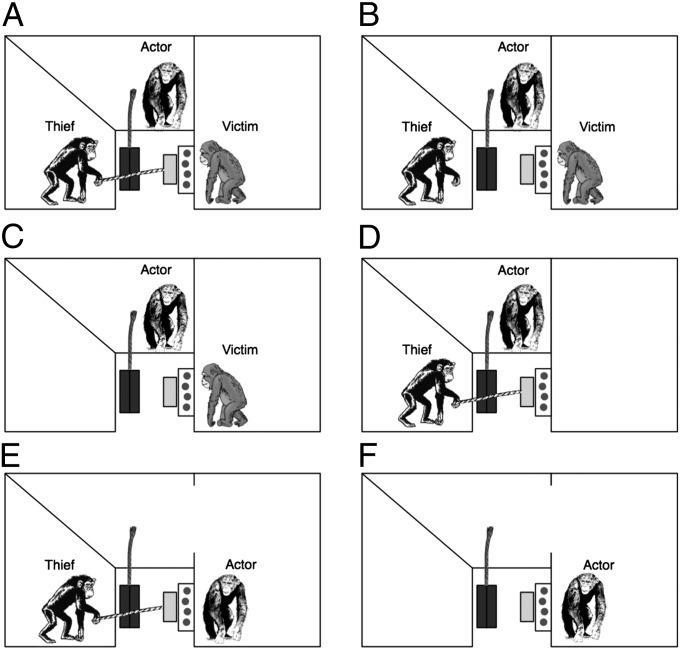Fig. 2.
Experimental setup. Chimpanzees could occupy three cages designated as “victim,” “thief,” or “actor.” In all conditions, food (circles) had to be manipulated to drop out of a clear box onto a sliding tray (light gray). A rope, if available, could be used to pull the tray from the victim’s cage toward the thief’s cage. Another rope, as well as a large button (not shown) could be used to release a trapdoor (dark gray) underneath the tray, causing the tray and the food to fall into a box, out of the chimpanzees’ reach and sight. The four third-party conditions in which a punisher had no access to food were (A) third-party theft (thief could pull food tray away from victim), (B) third-party unfair (experimenter moved food tray away from victim and toward thief), (C) third-party loss (experimenter moved food tray from victim to empty cage), and (D) third-party no-victim (thief could pull food tray away from empty victim’s cage). The second-party conditions in which the victim could enter the actor’s cage were (E) second-party theft (thief could pull food tray away from the actor) and (F) second-party loss (experimenter moved food tray away from actor to the empty thief’s cage).

